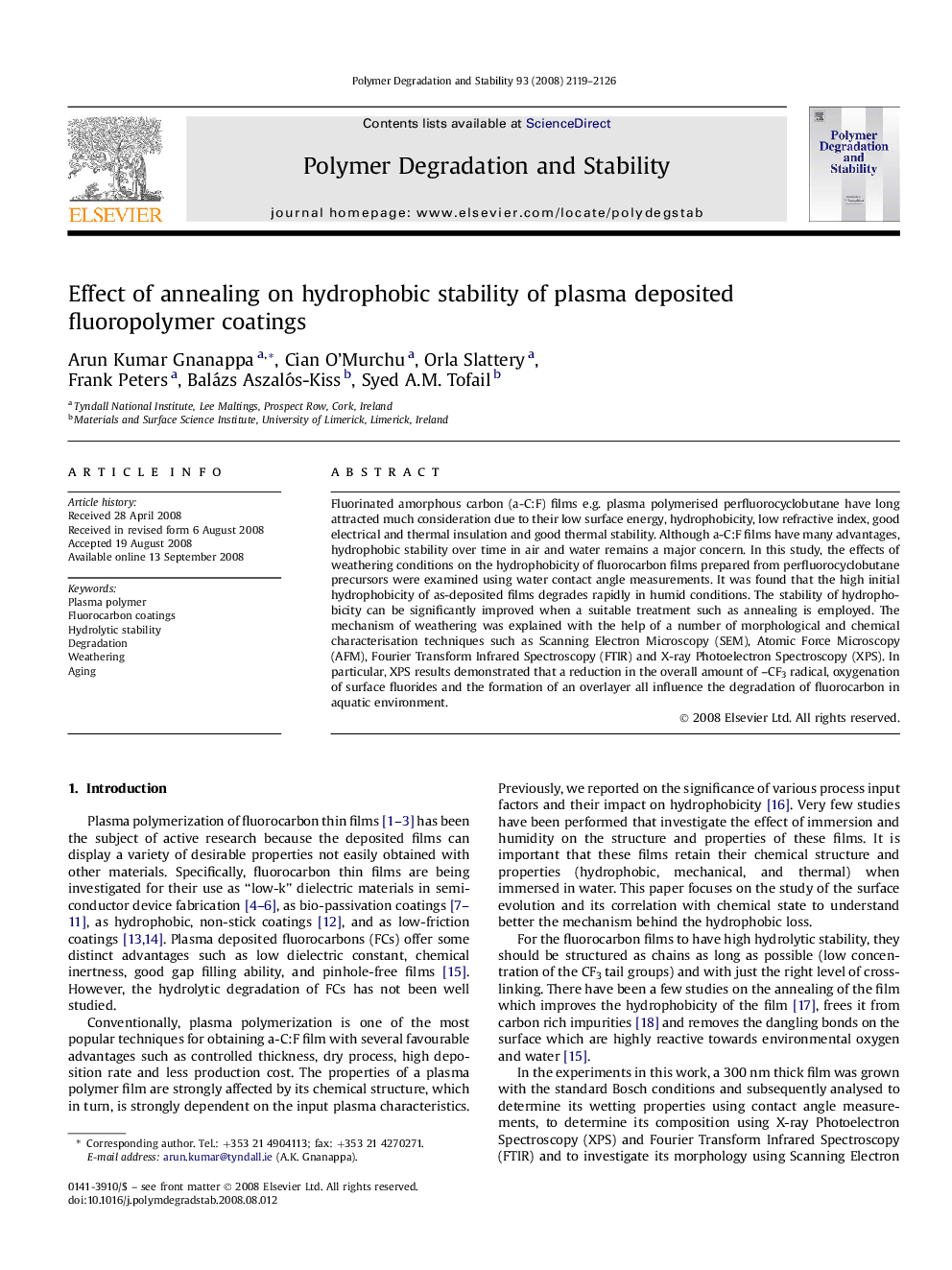| Article ID | Journal | Published Year | Pages | File Type |
|---|---|---|---|---|
| 5204263 | Polymer Degradation and Stability | 2008 | 8 Pages |
Fluorinated amorphous carbon (a-C:F) films e.g. plasma polymerised perfluorocyclobutane have long attracted much consideration due to their low surface energy, hydrophobicity, low refractive index, good electrical and thermal insulation and good thermal stability. Although a-C:F films have many advantages, hydrophobic stability over time in air and water remains a major concern. In this study, the effects of weathering conditions on the hydrophobicity of fluorocarbon films prepared from perfluorocyclobutane precursors were examined using water contact angle measurements. It was found that the high initial hydrophobicity of as-deposited films degrades rapidly in humid conditions. The stability of hydrophobicity can be significantly improved when a suitable treatment such as annealing is employed. The mechanism of weathering was explained with the help of a number of morphological and chemical characterisation techniques such as Scanning Electron Microscopy (SEM), Atomic Force Microscopy (AFM), Fourier Transform Infrared Spectroscopy (FTIR) and X-ray Photoelectron Spectroscopy (XPS). In particular, XPS results demonstrated that a reduction in the overall amount of -CF3 radical, oxygenation of surface fluorides and the formation of an overlayer all influence the degradation of fluorocarbon in aquatic environment.
